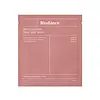What's inside
What's inside
 Key Ingredients
Key Ingredients

 Benefits
Benefits

 Concerns
Concerns

No concerns
 Ingredients Side-by-side
Ingredients Side-by-side

Water
Skin ConditioningButylene Glycol
HumectantGlycerin
HumectantInositol
HumectantPanthenol
Skin ConditioningHydroxyethyl Urea
HumectantGlyceryl Glucoside
HumectantTrehalose
HumectantBetaine
HumectantErythritol
HumectantSaccharide Isomerate
HumectantAllantoin
Skin ConditioningEthylhexylglycerin
Skin ConditioningMethyl Diisopropyl Propionamide
MaskingBeta-Glucan
Skin ConditioningPolymethylsilsesquioxane
1,2-Hexanediol
Skin ConditioningPolyglyceryl-10 Laurate
Skin ConditioningAcrylates/C10-30 Alkyl Acrylate Crosspolymer
Emulsion StabilisingDipropylene Glycol
HumectantHydrogenated Lecithin
EmulsifyingGlyceryl Stearate
EmollientTromethamine
BufferingCitric Acid
BufferingSodium Phytate
Sodium Citrate
BufferingHydroxyacetophenone
AntioxidantWater, Butylene Glycol, Glycerin, Inositol, Panthenol, Hydroxyethyl Urea, Glyceryl Glucoside, Trehalose, Betaine, Erythritol, Saccharide Isomerate, Allantoin, Ethylhexylglycerin, Methyl Diisopropyl Propionamide, Beta-Glucan, Polymethylsilsesquioxane, 1,2-Hexanediol, Polyglyceryl-10 Laurate, Acrylates/C10-30 Alkyl Acrylate Crosspolymer, Dipropylene Glycol, Hydrogenated Lecithin, Glyceryl Stearate, Tromethamine, Citric Acid, Sodium Phytate, Sodium Citrate, Hydroxyacetophenone
Water
Skin ConditioningGlycerin
HumectantAcrylates Copolymer
Niacinamide
SmoothingCeratonia Siliqua Gum
EmollientChondrus Crispus Extract
Skin ConditioningDipropylene Glycol
HumectantBetaine
HumectantAlgin
Masking1,2-Hexanediol
Skin ConditioningHydroxyacetophenone
AntioxidantButylene Glycol
HumectantPotassium Chloride
Agar
MaskingCaprylyl Glycol
EmollientSucrose
HumectantAllantoin
Skin ConditioningPolyglyceryl-10 Laurate
Skin ConditioningEthylhexylglycerin
Skin ConditioningGalactomyces Ferment Filtrate
HumectantAdenosine
Skin ConditioningDisodium EDTA
Pyrus Communis Fruit Extract
Skin ConditioningRosa Damascena Flower Water
MaskingCollagen Extract
Skin ConditioningIris Florentina Root Extract
MaskingCucumis Melo Fruit Extract
Skin ConditioningHedera Helix Leaf/Stem Extract
AntimicrobialDipotassium Glycyrrhizate
HumectantHydrolyzed Hyaluronic Acid
HumectantLactobacillus Ferment
Skin ConditioningBifida Ferment Filtrate
Skin ConditioningLactobacillus Ferment Lysate
Skin ConditioningTocopherol
AntioxidantWater, Glycerin, Acrylates Copolymer, Niacinamide, Ceratonia Siliqua Gum, Chondrus Crispus Extract, Dipropylene Glycol, Betaine, Algin, 1,2-Hexanediol, Hydroxyacetophenone, Butylene Glycol, Potassium Chloride, Agar, Caprylyl Glycol, Sucrose, Allantoin, Polyglyceryl-10 Laurate, Ethylhexylglycerin, Galactomyces Ferment Filtrate, Adenosine, Disodium EDTA, Pyrus Communis Fruit Extract, Rosa Damascena Flower Water, Collagen Extract, Iris Florentina Root Extract, Cucumis Melo Fruit Extract, Hedera Helix Leaf/Stem Extract, Dipotassium Glycyrrhizate, Hydrolyzed Hyaluronic Acid, Lactobacillus Ferment, Bifida Ferment Filtrate, Lactobacillus Ferment Lysate, Tocopherol
 Reviews
Reviews

Ingredients Explained
These ingredients are found in both products.
Ingredients higher up in an ingredient list are typically present in a larger amount.
1,2-Hexanediol is a synthetic liquid and another multi-functional powerhouse.
It is a:
- Humectant, drawing moisture into the skin
- Emollient, helping to soften skin
- Solvent, dispersing and stabilizing formulas
- Preservative booster, enhancing the antimicrobial activity of other preservatives
Allantoin is a soothing ingredient known for its protective and moisturizingg properties. Because of this, it is often added to products with strong active ingredients.
Studies show higher concentrations of this ingredient can promote wound healing.
Though it can be derived from the comfrey plant, allantoin is produced synthetically for cosmetic products to ensure purity.
Learn more about AllantoinBetaine is a common humectant (a substance that promotes retention of moisture). It's known to be gentle on the skin and can help balance hydration.
This ingredient is best for improving hydration and soothing irritated skin. Studies also show it helps even out skin tone.
Fun fact: Betaine is naturally created in the skin and body. The kind found within cosmetic products can be either plant-derived or synthetic.
Another name for betaine is trimethylglycine.
Learn more about BetaineButylene Glycol (or BG) is used within cosmetic products for a few different reasons:
Overall, Butylene Glycol is a safe and well-rounded ingredient that works well with other ingredients.
Though this ingredient works well with most skin types, some people with sensitive skin may experience a reaction such as allergic rashes, closed comedones, or itchiness.
Learn more about Butylene GlycolDipropylene Glycol is a synthetically created humectant, stabilizer, and solvent.
This ingredient helps:
Dipropylene glycol is technically an alcohol, but it belongs to the glycol family (often considered part of the ‘good’ alcohols). This means it is hydrating and gentle on skin unlike drying solvent alcohols like denatured alcohol.
As a masking agent, Dipropylene Glycol can be used to cover the smell of other ingredients. However, it does not have a scent.
Studies show Dipropylene Glycol is considered safe to use in skincare.
Learn more about Dipropylene GlycolEthylhexylglycerin (we can't pronounce this either) is commonly used as a preservative and skin softener. It is derived from glyceryl.
You might see Ethylhexylglycerin often paired with other preservatives such as phenoxyethanol. Ethylhexylglycerin has been found to increase the effectiveness of these other preservatives.
Glycerin is already naturally found in your skin. It helps moisturize and protect your skin.
A study from 2016 found glycerin to be more effective as a humectant than AHAs and hyaluronic acid.
As a humectant, it helps the skin stay hydrated by pulling moisture to your skin. The low molecular weight of glycerin allows it to pull moisture into the deeper layers of your skin.
Hydrated skin improves your skin barrier; Your skin barrier helps protect against irritants and bacteria.
Glycerin has also been found to have antimicrobial and antiviral properties. Due to these properties, glycerin is often used in wound and burn treatments.
In cosmetics, glycerin is usually derived from plants such as soybean or palm. However, it can also be sourced from animals, such as tallow or animal fat.
This ingredient is organic, colorless, odorless, and non-toxic.
Glycerin is the name for this ingredient in American English. British English uses Glycerol/Glycerine.
Learn more about GlycerinHydroxyacetophenone is antioxidant with skin conditioning and soothing properties. It also boosts the efficiency of preservatives.
This ingredient is not irritating or sensitizing.
Polyglyceryl-10 Laurate is an ester of lauric acid and Polyglycerin-10.
Polyglyceryl-10 Laurate is a cleansing agent and emulsifier. It helps gather dirt, oil, and other pollutants to be rinsed away. As an emulsifier, it helps prevent ingredients from separating, such as oil and water.
Polyglyceryl-10 Laurate may not be fungal acne safe.
Learn more about Polyglyceryl-10 LaurateWater. It's the most common cosmetic ingredient of all. You'll usually see it at the top of ingredient lists, meaning that it makes up the largest part of the product.
So why is it so popular? Water most often acts as a solvent - this means that it helps dissolve other ingredients into the formulation.
You'll also recognize water as that liquid we all need to stay alive. If you see this, drink a glass of water. Stay hydrated!
Learn more about Water